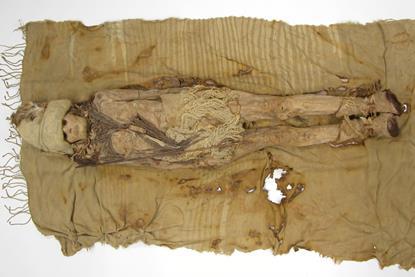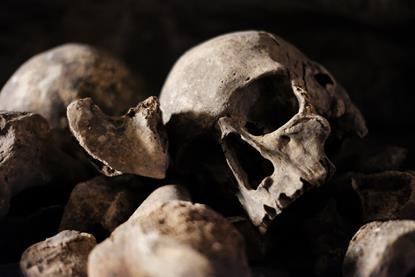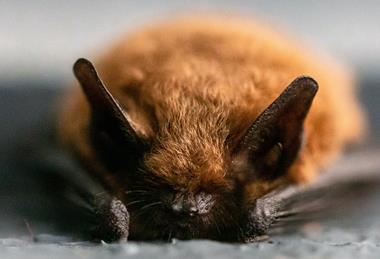Trick or treat!
To mark this year’s Halloween celebrations we’ve put together a collection of our spookiest content.
Reading after dark is not advised.
Tarantula bites and the emerging field of venom microbiomics
The field of venom-microbiomics is not only an opportunity for better medical treatment of venomous animal bites or stings, but also a means to explore a new ecosystem, learn about evolution, and study a microbiota with potential biotechnological applications.
Read storyUnder the microscope: rabies
World Rabies Day is celebrated each year on the 28th of September to raise awareness for rabies prevention and to shine a light on progress in defeating the disease.
Shining a light on microbes from the past with molecular paleomicrobiology
Is there a way to objectively address the history of microorganisms?
The hunt for the halophilic soda-lake vampire
In June 2019, microbiologists from around the world travelled to Transylvania, home of the story of Dracula, not on the hunt for vampires, but for the Halophiles 2019 meeting, focused on salt-tolerant microbes.
Deadly bacteria show thirst for human blood
Some of the world’s deadliest bacteria seek out and feed on human blood, a newly-discovered phenomenon researchers are calling “bacterial vampirism”.
World’s oldest cheese found with ancient mummies reveals origins of kefir
For the first time, scientists have successfully extracted and analyzed DNA from ancient cheese samples found alongside the Tarim Basin mummies in China, dating back approximately 3,600 years, suggesting a new origin for kefir cheese.
Shining a light on microbes from the past with molecular paleomicrobiology
Is there a way to objectively address the history of microorganisms?
Uncovering the secrets of the mummy
To his great surprise, microbiologist Frank Maixner found himself turning his scientific skills to mummy research. He reveals what the latest techniques are revealing about ancient humans, the history of malaria and the Medici family.
Puppeteer fungus directs ‘summiting’ of zombie flies
Scientists have uncovered the molecular and cellular underpinnings behind the ability of the parasitic fungus Entomophthora muscae’s ability to manipulate the behaviour of fruit flies.
Malaria pathogen found in mummified soft tissue in Medici tomb
The pathogen of the deadliest form of the disease has been identified in mummified soft tissue belonging to members of the Florentine dynasty.
- Previous
- Next
- News
Researchers scour more than 600 genome sequences in quest for origins of Black Death
Researchers seeking to better understand the origins and movement of bubonic plague have completed a painstaking granular examination of hundreds of modern and ancient genome sequences, the largest analysis of its kind.
- News
The plague may have caused the downfall of the Stone Age farmers
Ancient DNA from bones and teeth hints at a role of the plague in Stone Age population collapse. Contrary to previous beliefs, the plague may have diminished Europe’s populations long before the major plague outbreaks of the Middle Ages.
- News
Researchers unmask an old foe’s tricks to thwart new diseases
Researchers are studying Yersinia pestis, the bacterium that causes bubonic and pneumonic plague, to better understand its ability to evade the immune system and apply that understanding to control other pathogens.
- News
4,000-year-old plague DNA found – the oldest cases to date in Britain
Researchers have identified three 4,000-year-old British cases of Yersinia pestis, the bacteria causing the plague – the oldest evidence of the plague in Britain to date.
- News
Study reveals how plague spreads through wild rodent populations
Mathematical modeling reveals how fleas with early-stage Yersinia pestis infections are insufficient to drive epizootic outbreaks but can help promote a low level of enzootic plague.
- Features
London's hidden plague pits
Bunhill Fields cemetery in the City Road is a quiet haven on the edge of the City of London, mainly attracting office workers seeking lunchtime tranquility or possibly a shortcut to the Artillery Arms pub in Bunhill Row.
- Previous
- Next
- Previous
- Next








































